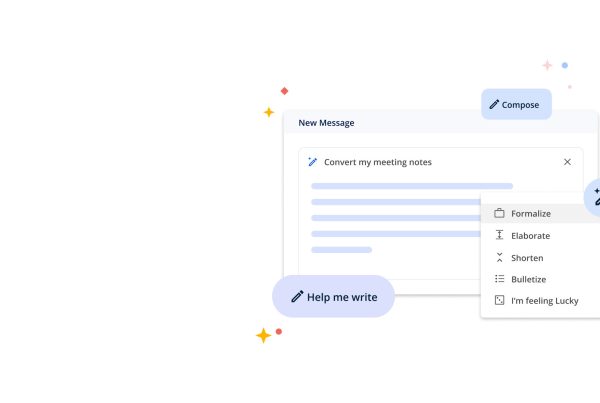
Gonçalo Malho Rodrigues
It was the gym’s fault.
What if the gym, which we don’t frequent, surprised us with an approach like: “Dear member, considering that you pay your monthly fee, but haven’t been to the gym, take advantage of other services, such as a massage at the SPA”. What do you think? Nice? Indeed. But it’s not just “nice”; it would be an intelligent strategy that, on top of that, is nice.
In my case, there were two months in the year when I would go to the gym like a convict obsessed with physical fitness (always chasing losses, by the way), and then ten long months of morbid inactivity would follow. During this period, whenever I saw the monthly fee charged to my bank account, I thought about the money I was “throwing away” and the waste I was allowing every month. However, it was, in fact, my responsibility not to use it.
For all that, the SPA strategy could have changed my feeling: “Well… I don’t go to the gym, but I can always get a massage once in a while, and it tastes like life!”. This probably would have been the factor that would have made me hold back the urge to cancel the gym, as I later ended up doing.
The driver for what would become JellyFIT
I realized later that when I started this activity, I brought an advantage and a disadvantage. Beginning with the penalty, it was the fact that I had no knowledge and experience about the business model of digital agencies. The advantage, on the other hand, is that I had no knowledge and understanding of the business model of digital agencies. No, I was not wrong. Both the advantage and the disadvantage are, in fact, the same, and it was this condition that allowed me to see this business from the outside, from the client’s perspective, without the formatted and accommodated look of those who have been working in this business for years and follow the leader without question.
Just like gyms, Digital Agencies also sell plans with monthly fees. In most agencies, these plans are limiting, penalizing, opaque and inflexible. Let’s think, for example, of a typical support plan. Let’s imagine that in a given month, it was not necessary to consume all the hours of the program. What do we do? Do we shut up and wait silently for the next month, or do we allow the client to use those unused hours (credits) in another entirely different service that he needs, such as a simple (but necessary) business card for his latest hire? Why limit the Customer to one service or package if we provide so many differentiated services in our agency? It just doesn’t make sense.
This was the thought that inspired what would become our (much loved) JellyFIT multi-service plan, **the program that changed the model of service delivery as we know it. **
The obsolete model of Digital Agencies
In this context, in mid-2014, I am thinking, with concern, of some of the clients who were paying my agency retainers without however taking advantage of the contracted services. In other words, we were receiving money from the client, but we were not providing any service (the same as paying for the gym and not going to it). To an outsider, it may seem beastly, but it’s not. It is just beastly.
A client who pays and doesn’t take advantage of the services to which he is entitled (even if the responsibility for non-use lies with the client) will end up cancelling the plan, and the one who loses is the agency.
The client can always not use services in the plan, but they should at least be given that opportunity freely and not limited. Then, there was yet another rule that bothered me. The fact that if the Customer needed to use hours outside the contracted plan, these hours would cost more than the unit price of the program.
It is the same principle used in the tariffs of telephone companies. While I understand the economics of the model, it is not Customer friendly, and we need to change that.
My opinion is that if I already have a contracted plan with a company (with a binding contract in most cases) and I need to consume more than what is acquired in a given month, this additional consumption should be paid, at least at the same unit price of the base plan and not more. They are penalizing me for consuming more when I should be benefiting! We all agree that we don’t agree with this model, but we conform. I was complaining about the injustice but living with it.
And that was the challenge: to get on the client’s side and define what and how had to change in our model to make it fair and make sense for our clients. It was under this exercise that I concluded that the agency service delivery model is obsolete.
Obsolete because:
it is inflexible (it does not adapt to the client’s accurate and current needs);
it is unclear (clients don’t understand what exactly the agency is doing)
it is limiting (limited to the package of services and hours contracted, and if I need another assistance, I pay an extra fee)
it’s unfair (typically, in an hourly plan, whatever service is provided, the hourly rate is the same, whether it’s 1 hour of support or development);
To name a few points.
It needs to be tailored to the reality of companies, and reality in companies is highly dynamic. Needs arise and change from one minute to the next. It’s necessary to design the booth for that fair we’re going to attend in 2 weeks; it’s required to update some content on the company’s website; new business cards are needed for the salesperson hired this morning; among many other episodes that occur in the normal day-to-day of a company.
JellyFIT begins to take shape as the new plan model
It was clear to me that we were facing the opportunity to create a service plan model that made sense for the Customer, both from a functional and economic point of view. The model that I, as a customer of other services, would like to be proposed to me. Such a model would therefore have to ensure that the client has the proper/access to
Availability – all the services of the agency, in a single plan and price
Fairness – differentiated pricing, appropriate to the type of service provided
Visibility – allowing us to visualize each task we perform (my.jellyfit.pt application)
Simplicity – in the operational process (execution of work) and economics (debit of units in the plan)
To comply with all these qualities, it was necessary to redesign our model. To ensure simplicity for the client (and for the agency), we would have to take money out of the equation and start working by credit units. That is, each service corresponds to a certain number of units/hour, which are debited in the plan according to the services and amount of hours consumed. Good. The principle was there, but how would the client see all this happening? That’s right… We need to develop an application that allows us to view the plan’s activities. So here is MyJellyFIT, the plan’s web and mobile application.
The MyJellyFIT application – a kind of SaaS (Service as a Software)
Once again, you may have thought I got the title wrong, but no. It is “Service as a software” and not the well-known term “software as a Service”. The Customer has a plan that allows them to use services as if they were software. MyJellyFIT is the application that helps our client to see everything related to his plan:
current account: consumptions of hours and units
operations: ongoing and completed tasks
analytics: consumption rates, most consumed services, etc.
Submit task requests
Summary
The JellyFIT plan and its name arise from a mindset that, just like people, companies must also keep fit, promoting the active use of services without “fat” and avoiding waste.
JellyFIT emerges with the premise of making available to the market a service plan that intends to be highly visual, flexible and functional. Just like ordering a pizza online, JellyFIT also allows you to “order” any service provided by Jellycode through a single subscription.
It’s like I said before: the service delivery model, as you know it, has changed, and it’s called JellyFIT.











